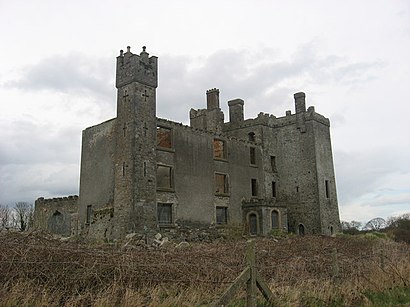See Athcarne Castle, Duleek, on the map
Directions to Athcarne Castle (Duleek) with public transportation
The following transit lines have routes that pass near Athcarne Castle
Bus:
How to get to Athcarne Castle by Bus?
Click on the Bus route to see step by step directions with maps, line arrival times and updated time schedules.
Bus stations near Athcarne Castle in Duleek
- Balrath Cross (Duleek Rd),49 min walk,
Bus lines to Athcarne Castle in Duleek
- 103X,U C D Belfield,
- 105,Drogheda,
What are the closest stations to Athcarne Castle?
The closest stations to Athcarne Castle are:
- Balrath Cross (Duleek Rd) is 3831 meters away, 49 min walk.
Which Bus lines stop near Athcarne Castle?
These Bus lines stop near Athcarne Castle: 105

Public Transit to Athcarne Castle in Duleek
Wondering how to get to Athcarne Castle in Duleek, Ireland? Moovit helps you find the best way to get to Athcarne Castle with step-by-step directions from the nearest public transit station.
Moovit provides free maps and live directions to help you navigate through your city. View schedules, routes, timetables, and find out how long does it take to get to Athcarne Castle in real time.
Looking for the nearest stop or station to Athcarne Castle? Check out this list of stops closest to your destination: Balrath Cross (Duleek Rd).
Bus:
Want to see if there’s another route that gets you there at an earlier time? Moovit helps you find alternative routes or times. Get directions from and directions to Athcarne Castle easily from the Moovit App or Website.
We make riding to Athcarne Castle easy, which is why over 1.5 million users, including users in Duleek, trust Moovit as the best app for public transit. You don’t need to download an individual bus app or train app, Moovit is your all-in-one transit app that helps you find the best bus time or train time available.
For information on prices of Bus, costs and ride fares to Athcarne Castle, please check the Moovit app.
Use the app to navigate to popular places including to the airport, hospital, stadium, grocery store, mall, coffee shop, school, college, and university.
Location: Duleek, Ireland

Attractions near Athcarne Castle
- Gaulstown
- Riverstown Lane
- Irishtown House
- Riverstown (Rathfeigh)
- Abbey Road
- New Bridge
- The Old Forge Bed & Breakfast
- Waterside
- Puddenhill
- Dounestown Bridge
- Gillinstown Bridge
- 2 The Steeples
- Bunuan Bridge North
- Landsdown House
- 9 Abbey Road
- Kentstown Post Office
- Balrath
- Abbeyland
- Katie's Coffee Shop
- Duleek Garda Station
How to get to popular attractions in Duleek with public transit
- Vodafone Ireland, Glencullen
- Clonmel / Cluain Meala, Clonmel
- Shankill, Shankill
- Trim Castle, Trim
- The George Hotel, Henry Street
- Dundrum Luas, Dundrum
- Republic of Ireland, Dublin
- Limerick / Luimneach, Henry Street
- Ikea, Dubber
- Eyre Square Centre, Galway
- Intel, Leixlip
- IBM Technology Campus, Blanchardstown
- Malahide, Malahide
- The Fumbally, Dublin
- Rds Simmonscourt, Dublin
- Raheny Dart Station, Dublin
- Royal Canal Park, Dublin
- Limerick institute of Technology (LIT), Mayorstone
- Dundrum Shopping Centre, Dundrum
- Beaumont Hospital, Dublin